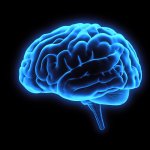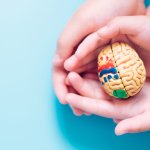In a study first published in April’s edition of Advanced Functional Materials, researchers found that stem cells boost natural repair following cardiac arrest.
The most common consequence of cardiac arrest is brain injury. Decreased blood flow and oxygen to the brain can result in damage to specific areas such as the temporal lobe, which is responsible for memories. [1]
According to the British Heart Foundation, there are around 30,000 out of hospital cardiac arrests in the UK per year, with survival rates of only 1 in 10.
While there are currently steps towards improving these survival rates – mainly public awareness and educational campaigns focused on immediate response [2] – better survival rates potentially means more patients suffering from brain injury, which can range in severity.
What researchers at the University of Maryland School of Medicine in the U.S. have found is that neural stem cells can help with repairing post-cardiac arrest brain damage when their carbohydrate structure is manipulated. [3]
In an animal study using rats, scientists applied sugar molecules to the neural stem cells in a process called glycoengineering.
It’s thought that the application of these sugar molecules provide the neural stem cells with a better chance of retention and integration within the harsh microenvironment of the brain.
Researchers examined the efficacy of the ‘sugar-coated’ neural stem cells that had been pretreated with TProp (the name of the modified sugar molecule applied) with naive human neural stem cells.
They found through subsequent testing that the stem cells that had been pretreated with TProp improved brain function substantially, along with reducing anxiety and depression-related behaviours.
The ability for synapses to modify the strength of their connections (otherwise known as synapse plasticity) also improved, with the TProp group also demonstrating a reduction in neuroinflammation in the central nervous system.
Overall, the findings from the University of Maryland are promising as they indicate that these glycoengineered stem cells could help regenerate connections between synapses in the brain that have been affected by cardiac arrest related injury in humans.
The next steps will involve tests on larger animals before hopefully moving to a clinical study.
If you want to know more about how you can save your baby’s powerful stem cells, fill out the form below for your free welcome pack.
References
FIND OUT MORE, REQUEST YOUR WELCOME PACK TODAY
All you need to know to make an informed decision.
Provide your contact details to request:
– Complete Welcome Pack and Parent’s Guide
– Information via email
– Contact from our specialist advisors









